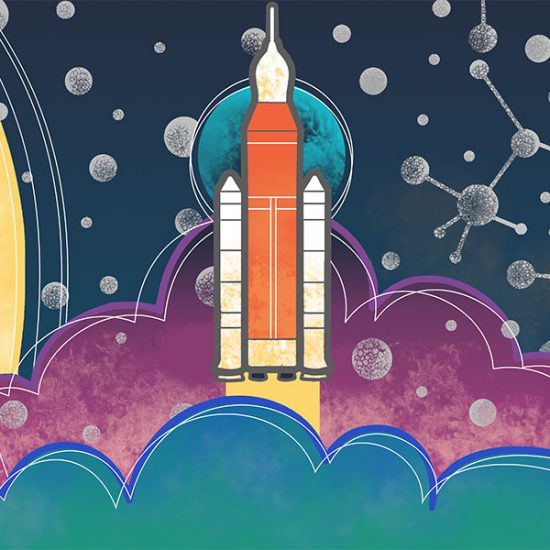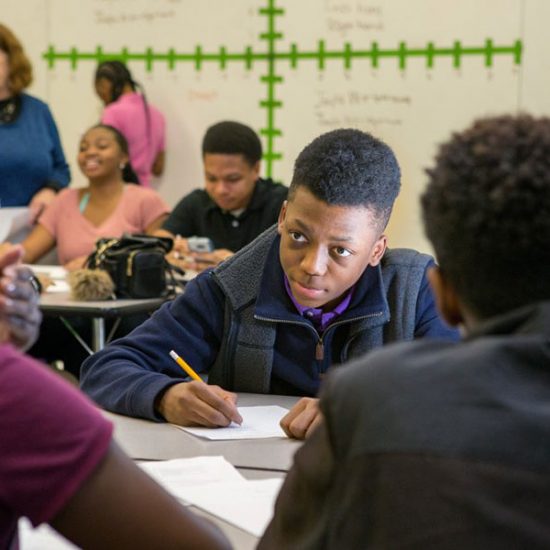Life as a High School Chemistry Teacher
Deciding on a career path can be an important and difficult decision. What do you want to spend your life’s work doing? What will be most meaningful to you? What career will you enjoy most?
These are questions that are important to consider when making career decisions. As with any career decision it is important to speak with people who are in the career so you can get an idea of what it would be like. In this blog, and in future blogs in this series, we will be having discussions with grade 7-12 math and science teachers about their careers and then share those conversations with you.
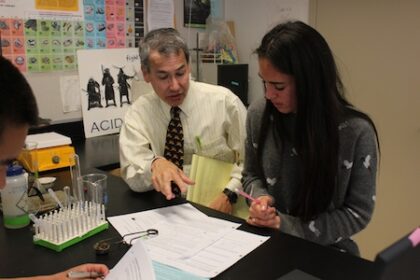 Steve Sogo, known as Mr. Sogo to his students, is a high school chemistry teacher in Laguna Beach, California.
Steve Sogo, known as Mr. Sogo to his students, is a high school chemistry teacher in Laguna Beach, California.
Mr. Sogo’s Teacher Stats:
Where do you teach? Laguna Beach, California
How many students attend your school? ~1,100
Typical class size: ~30
What was your college major? Chemistry! MS in Chemistry from California Institute of Technology
Subjects that you currently teach: Chemistry, Advanced Chemical Research, Integrated Freshman Science
Favorite topic to teach: Molecular structures
Years teaching: 31
A hobby that you enjoy: Crossword puzzles, cycling
Day-to-day of a high school chemistry teacher
Steve starts teaching at 7:30 AM and teaches 5 class periods a day. If you were to enter his classroom you wouldn’t see a lot of lecturing or Powerpoints; you’d see students investigating science and discovering new things on their own. Steve is a huge advocate of hands-on learning and allowing students to discover things for themselves. He views himself as the facilitator of learning and as such, allows students to investigate through group problem solving activities and laboratory experiments.
During his prep hour he often spends time preparing activities, labs, grading papers, buying chemicals and lab equipment, or reading scientific journal articles to help his advanced chemical research class know where to go next.
Once the school day is over, Steve typically stays at school until 5pm; during that time, he facilitates after school projects with students so they can explore science without a box holding them in. He invites teams of students to come in and work on exciting and difficult challenges. Whether it is building a robot that will play chess (and actually pick up and move the pieces) or making biodiesel to run in the school lawn mower, Steve guides these groups of students and gives them the opportunity to experience science unbounded.
The impact of COVID-19
The change from COVID-19 came quickly and with little warning. Steve discussed how school was closed on Friday and as teachers they were expected to be up and teaching online the following Wednesday.
As a teacher who rarely lectures, the transition to online learning required Steve to pivot towards a more traditional model of education. Steve created high-quality video lessons and activities his students could do at home. He learned quickly that requiring students to submit work along with their answers was critical to assessing if they were actually progressing as students.
Lessons learned during the pandemic
There are so many unknowns with what the future classroom will be like, but there were two main things that Steve did during COVID that he would love to incorporate in the future.
First, he held Friday science webinars where he would have his previous students come and discuss their science related careers. Everyone from engineers, biologists, PhD students, and even an archeologist who is working in South America. He said it was such a useful experience for his students to see “What’s next if you enjoy science?”
Second, because it was hard to truly assess student learning during the pandemic, Steve and some of the other science teachers at his school started doing one-on-one 10-minute Zoom interviews to help them to assign grades. It was such a personal, effective, and enjoyable experience that he’d love to try to find a way to keep doing that in the future.
Steve’s career path: How he landed in the classroom
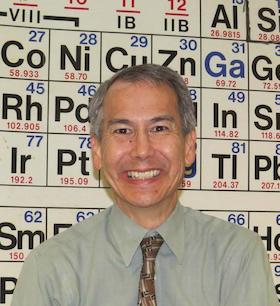 Steve’s original plan was to become a college professor. As a graduate student at California Institute of Technology (Caltech) he learned that he enjoyed the teaching aspects of his time there more than working on research. As a college professor, he knew that research would always be part of his career expectations. As an undergraduate Steve had the opportunity to be a general chemistry teaching assistant and lab instructor; and as a graduate student at Caltech he was a teaching assistant. These experiences helped him to know that he really enjoyed teaching, so he pursued that path and became a full-time high school chemistry teacher in 1989 after earning his masters in Chemistry. At one point early in his career he was offered a community college instructor position and a high school teaching position at the same time. When asked why he chose high school over community college he said,
Steve’s original plan was to become a college professor. As a graduate student at California Institute of Technology (Caltech) he learned that he enjoyed the teaching aspects of his time there more than working on research. As a college professor, he knew that research would always be part of his career expectations. As an undergraduate Steve had the opportunity to be a general chemistry teaching assistant and lab instructor; and as a graduate student at Caltech he was a teaching assistant. These experiences helped him to know that he really enjoyed teaching, so he pursued that path and became a full-time high school chemistry teacher in 1989 after earning his masters in Chemistry. At one point early in his career he was offered a community college instructor position and a high school teaching position at the same time. When asked why he chose high school over community college he said,
“I want to sculpt people and bring out the best they can be. High school age is a time where a teacher can do that.”
Steve loves being a high school chemistry teacher
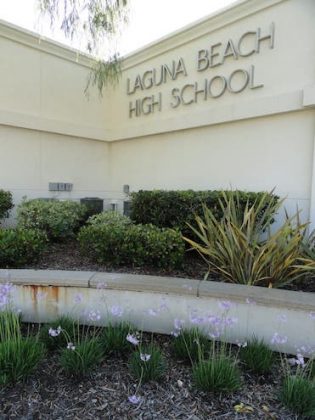
Steve loves the creativity that teaching offers him and he loves seeing his students’ progress. Steve spoke about how teachers often rely on resources like the textbook or a lab manual, but he has never been that teacher. He loves to create new activities, experiences, and lab experiments to best reach his students. He finds great joy in creating material and experiences for his students; in fact, when asked why he loves his job he said,
“For me, the biggest thing is I can be creative in a way that clearly makes a difference.”
In addition to being creative, Steve loves seeing his students learn and progress. He feels that the growth that one sees in students is a large part of the job satisfaction. He says you get that as a teacher in a way that is unlike any other career. Seeing students who come in with limited knowledge and confidence leave with great knowledge and confidence is one of the great joys of being a teacher.
Authentic scientific research is important in the classroom
Steve teaches an advanced chemical research class where his students explore real scientific questions and try to discover answers. From teaching this class, Steve has become a big proponent of authentic scientific research in the classroom. Speaking of authentic research in the classroom, he said,
“It is only those who can create, think beyond, and find a better solution that will improve humanity.”
He went on to say,
“The biggest danger with young people is the feeling that everything is already known… Google has all the answers. Everything is already done. The students who buy into this think education is just learning how to google it…”
“So, when we are doing real research, students rapidly find that Google has a lot of answers but not all the answers. When we are doing real research, we are extending the knowledge of humanity. It is participation in this authentic scientific research that builds the skills that will make the world a better place.”
Steve recommends teaching as a career to science and math majors
First, Steve wanted to point out that teaching isn’t for everyone, but if you’re a fit for the career, it has great rewards. With teaching you get to make real connections and form lasting relationships with students. If you are the kind of person that would enjoy making those connections, teaching is a great choice. He went on to say that if you like kids and want to change their lives, teaching may be for you.
Also, Steve has noticed how much more collaborative the teaching profession has become over the years. With the internet and teaching conferences, Steve says that it is really enjoyable and easy to share things that you create with other teachers all around the world.
What should you know before entering the profession?
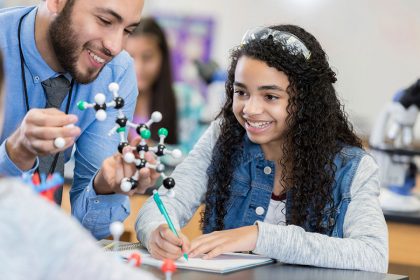 Steve had four pieces of advice for those who are considering teaching as a career path.
Steve had four pieces of advice for those who are considering teaching as a career path.
First, if you are interested in the career, you need to try it out, get in the classroom, and see how it feels. There is no replacement for being in the classroom to know if teaching would be for you.
Second, teaching is a lot of work if you are doing it right. Steve talked about the phrase, “Teacher work is never finished.” He said, “You do the best you can. You’ve never perfected your lesson, you’ve never given your student’s papers as much time as you’d like to give them; you make compromises, but if you are doing it well, then you are always trying to make improvements and that is why teacher work is never finished.” Although it is never finished, it is a highly rewarding and engaging work.
Third, Steve pointed out that there are many resources for learning how to teach better; don’t silo yourself and think that you are alone. There are websites, blogs, and other teachers. Take advantage of opportunities to learn from others and it will help you to progress so much faster!
Lastly, every school is different, so you need to visit a lot of them. Although Steve believes a good teacher can teach in any environment, he also knows that every teacher will have a school that would be best for them. He says that you need to have enough experiences to know what school environment would be best for you and your personality. If you are in a school that you don’t like, don’t think that all schools are that way. Try out other schools and find the best fit for you.
Explore the teaching profession!
Conclusion
There are many options a math or science major has when it comes to career choices, and grade 7-12 teaching is certainly one of them. If you are considering becoming a teacher, it is a career path with many benefits and offers you a lifetime of opportunity to change the world one student at a time. Steve is a great example of an enthusiastic high school chemistry teacher who loves his students. If you’d like to learn more about why teaching is a great career choice you can explore our website (getthefactsout.org). Also, if you’d like to learn more from Steve about high school chemistry teaching, you can contact him at ssogo@lbusd.org.
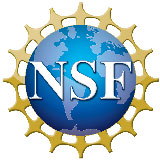 This material is based upon work supported by the National Science Foundation under Grant Nos. 1821710 & 1821462. Any opinions, findings, and conclusions or recommendations expressed in this material are those of the author(s) and do not necessarily reflect the views of NSF
This material is based upon work supported by the National Science Foundation under Grant Nos. 1821710 & 1821462. Any opinions, findings, and conclusions or recommendations expressed in this material are those of the author(s) and do not necessarily reflect the views of NSF


